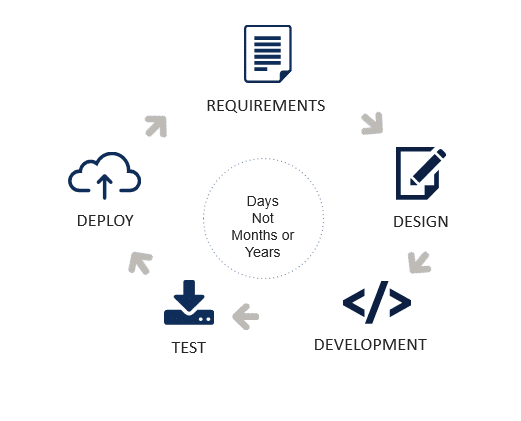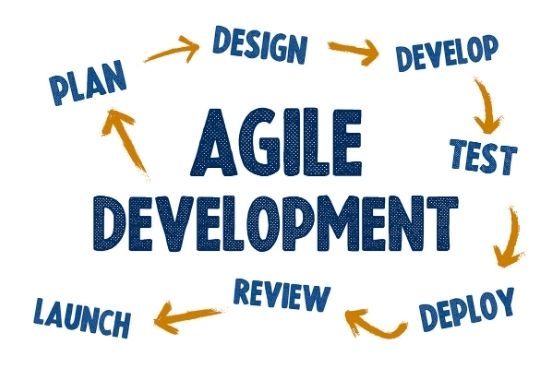Beyond Iterative Coding
Many software teams think they’re “doing Agile” when they’re really just breaking down their coding phase into smaller chunks. This fundamental misconception might be holding your team back from achieving true agility and delivering real business value.
The Misconception: “Agile Is Just Iterative Development”
I’ve visited dozens of organizations that proudly claim to be Agile while maintaining their traditional software development lifecycle with a twist. They still have lengthy requirements gathering upfront, followed by extensive design phases. The only difference? They’ve chopped the coding phase into sprints.
This approach misses the core purpose of Agile. These teams still end up with:
- Risky “big bang” releases that delay value delivery
- Minimal feedback until late in the project lifecycle
- Poor ROI as there’s no return until everything is completed
- Limited ability to adapt to changing requirements
What Agile Actually Means: Continuous End-to-End Delivery
According to the Agile Manifesto, two critical principles state:
“Our highest priority is to satisfy the customer through early and continuous delivery of valuable software.”
“Deliver working software frequently, from a couple of weeks to a couple of months, with a preference to the shorter timescale.”
True Agile means delivering complete, working software incrementally—not just writing code in iterations. This requires rethinking how we handle every aspect of software development.
Moving to Days, Not Months

For genuine Agile implementation, your team needs to:
- Embrace emergent requirements – Instead of defining everything upfront, progressively elaborate on requirements throughout each sprint
- Integrate all SDLC phases within each iteration – Requirements, design, development, testing, and deployment all happen within the sprint. Each Sprint is about future discovery and current delivery.
- Focus on delivering working software – Each iteration should result in potentially releasable features
- Establish rapid feedback loops – Get customer input early and often to validate your direction
- Adopt technical practices that enable speed – Implement continuous integration, automated testing, and DevOps practices
How Agile Testing Fits Into This Picture
Effective Agile testing practices are essential for making this rapid, end-to-end delivery possible. Testing cannot be relegated to the end of development—it must be integrated throughout the process.
In our next article, we’ll explore how Agile testing methods can help your team achieve true continuous delivery. We’ll cover approaches like Test-Driven Development (TDD), Acceptance Test-Driven Development (ATDD), and how to build quality into your process from day one.
Ready to Fix Your Agile Implementation?
If you recognize your organization in this misconception, you’re not alone. Research by Version One shows that over 60% of organizations struggle with this exact challenge when implementing Agile.
Take the first step by assessing whether your team is truly delivering working, tested features in each iteration, or merely breaking the coding phase into smaller chunks.
Bridge the Gap from Theory to Practice
Once you’ve identified this common misconception in your organization, how do you fix it? Our Certified Scrum Developer Team Member Practices course directly addresses this challenge by teaching teams how to move beyond simply breaking down the coding phase to actually delivering complete, working features in short iterations. Participants learn practical techniques for integrating requirements, design, development, testing, and deployment within each sprint—exactly what’s needed to implement the “Moving to Days, Not Months” approach described above.
Further Reading in Our Agile Testing Series:
- 4 Typical Transitions Teams Go Through When First Adopting Scrum
- What are the Different Types of Tests?
- What is The Agile Testing Quadrant?
- Which Tests Should We Automate?
- How Many Tests Are Enough?
- What is The Testing Pyramid?
- When Do We Start Testing in Scrum?
- Who Is Responsible for Testing in Scrum?
FAQ About Agile Implementation
Q: Can we be Agile without changing our requirements gathering process?
A: Not fully. True Agile requires rethinking how you gather and refine requirements, moving from comprehensive upfront specification to ongoing discovery and elaboration.
Q: We do two-week sprints for coding. Isn’t that Agile?
A: Breaking only the development phase into sprints while keeping traditional phases for everything else is not true Agile. Each sprint should include all aspects of software delivery.
Q: How can we possibly complete requirements, design, coding, testing, and deployment all within a short sprint?
A: It requires focusing on smaller, valuable features and adopting practices like continuous integration, automated testing, and close collaboration between all team members. Start small and expand your capabilities over time.
